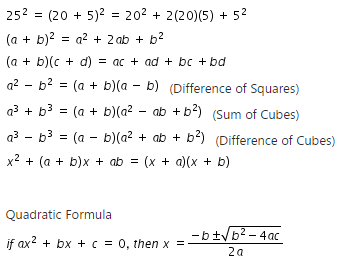Clusters should not be sorted from Major to Supporting and then taught in that order. To do so would strip the coherence of the mathematical ideas and miss the opportunity to enhance the major work of the grade with the supporting clusters.
Related Standards
Related Access Points
Access Points

 .
.
Related Resources
Lesson Plan
Original Student Tutorial
Problem-Solving Task
Tutorials
Student Resources
Original Student Tutorial
Learn how to factor polynomials by finding their greatest common factor in this interactive tutorial.
Type: Original Student Tutorial
Problem-Solving Task
In this task students investigate and ultimately prove the validity of the method of generating Pythagorean Triples that involves the polynomial identity (x2+y2)2=(x2-y2)2+(2xy)2.
Type: Problem-Solving Task
Tutorials
This video tutorial gives an introduction to the binomial theorem and explains how to use this theorem to expand binomial expressions.
Type: Tutorial
This tutorial shows students how to use Pascal's triangle for binomial expansion.
Type: Tutorial
Parent Resources
Problem-Solving Task
In this task students investigate and ultimately prove the validity of the method of generating Pythagorean Triples that involves the polynomial identity (x2+y2)2=(x2-y2)2+(2xy)2.
Type: Problem-Solving Task









